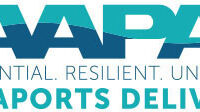Creating Jobs by Investing in Sustainable Infrastructure and Greening the Supply Chain

Building flexible, sustainable and green infrastructure is imperative for seaports to ensure responsiveness to an ever-changing and dynamic maritime market.
At the Port of Everett, we are building for a bigger, greener, more prosperous future through major seaport investments that integrate green infrastructure, environmental restoration and climate change readiness.
Located where the waters of the Snohomish River, a major salmon bearing tributary, meet the cold inland waters of the Puget Sound, the Port of Everett is focused on operating and developing in a way that supports the health of the environment and takes into account the coming changes to our climate and regulatory environment.
Integrating a strong environmental approach to our projects has its benefits; we have formed high value external partnerships, the projects are on fast-track regulatory pathways, and we have unlocked significant funding opportunities.
The Port of Everett takes a holistic and coordinated approach to its capital projects to ensure they are designed in a way that create jobs, and that are economically viable and environmentally responsible. Through our continued commitment to North America’s Green Marine environmental certification program, we also regularly implement practices and partnerships that seek to improve and protect our air, land and water.
Recently, the Port of Everett has embarked on a couple hundred-million-dollar capital investments to systematically modernize and expand our seaport facilities. These projects will provide not only a net gain for the port’s bottom line, but also the environment. These projects incorporate environmental restoration, are designed to account for future sea level rise, add shorepower capabilities and incorporate infrastructure to support the electrification of the cargo handling operation. Together, these projects are contributing to the greening of the supply chain.
As my dad always said, “Measure twice, cut once.” This economic principal applies to not only woodwork, but the construction of an international seaport facility. Taking into account the full spectrum of our operating framework is critical to making our once-in-a-lifetime investments resilient and sustainable now and into the future.
One of the more challenging factors with these modernization and expansion projects is dealing with environmental cleanups. In the cases of our recent South Terminal Modernization and future expansion, and the coming 40-acre Norton Terminal now in construction, pollution consumes the project sites. To address this, the port integrates cleanup with development so that the cleanup and construction of our maritime facilities happen contemporaneously as one comprehensive project. In our experience, this is the most economical and agency acceptable approach. We receive excellent support from the various permitting agencies for this approach because the changes that are being made are inextricably tied to the restoration of the environment.
It is estimated that the water level of Puget Sound will rise approximately three feet by the end of this century. Waiting for regulations to tell us to take into account the effects of climate change is not an option when facilities intended to operate for generations are being constructed now. It is far more economical to take rising sea levels into account now before it is required. It usually means just a little more fill and slightly higher pilings.
Further, as we work to modernize and expand our facilities and construct new cargo terminals, we are incorporating significant electrical capacity to be able to provide shorepower to larger vessels, support our growing on-site commercial and military ship repair operation, and add in electric charging stations for maritime assets along our short-sea shipping route. So, while the technology may not be fully implemented with ships that currently call the port, we will be ready with the infrastructure when the technology arrives. Again, putting these facilities in now while the ground is open reduces the chance of having to cut into our facilities to make costly retrofits.
In 2019, the Port of Everett was designated by the U.S. Secretary of Transportation as a Federal Maritime Administration Marine Highway Project for the Puget Sound Container on Barge Service under the America’s Marine Highway Program. Currently, the port operates a short sea shipping service for the aerospace industry, but through key partnerships, we are looking to expand its utility in the Puget Sound and into Canada to reduce truck traffic on the roads and the associated carbon footprint.
By incorporating a daily focus on sustainability into our operations and capital portfolios, the Port of Everett is well-positioned to be able to continue to meet the changing market demands and continue to support thousands of family-wage maritime jobs in our region.




